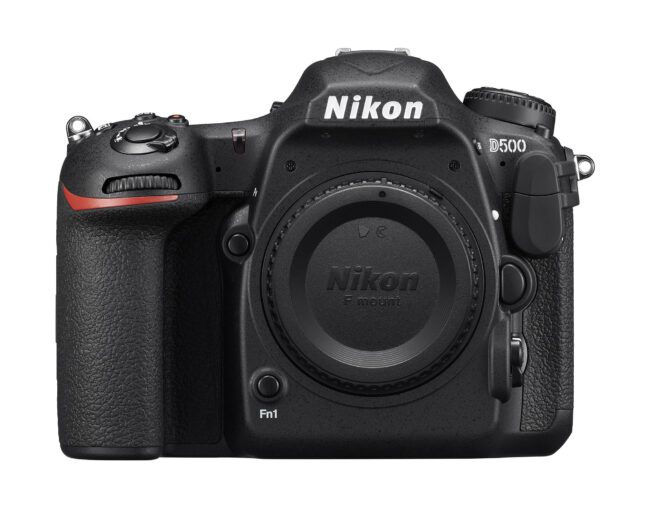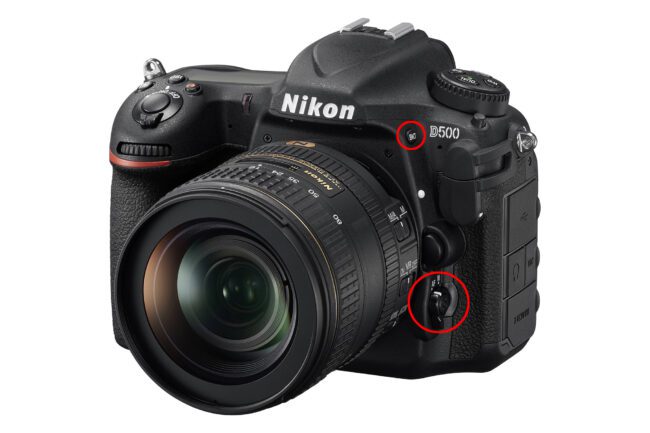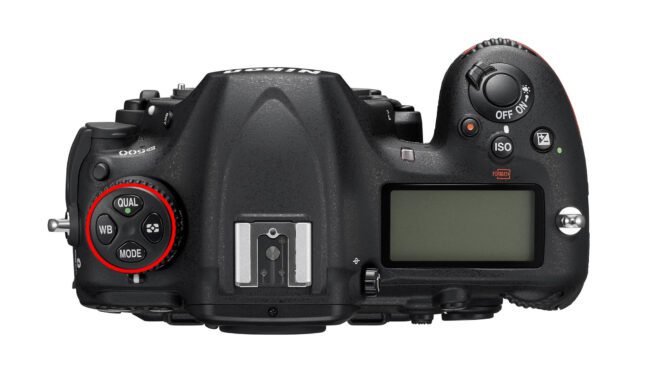إعدادات نيكون D500 الموصى بها
Recommended Nikon D500 Settings
تعد كاميرا D500 DSLR الاحترافية من نيكون واحدة من أفضل الخيارات بين العديد من مصوري الرياضة والحياة البرية. بفضل جودة تصنيعها الرائعة، وبيئة العمل التي أثبتت كفاءتها، ونظام التركيز البؤري التلقائي السريع للغاية والمخزن المؤقت الضخم، اكتسبت كاميرا Nikon D500 مكانتها كأفضل كاميرا DSLR من Nikon في التصوير الفوتوغرافي للحركة. ومع ذلك، وعلى الرغم من نقاط قوتها، فإنها تظل أداة معقدة تحتوي على العديد من خيارات القائمة التي يمكن أن تكون مربكة لبعض المصورين. في هذه المقالة، سأقدم معلومات حول الإعدادات التي أستخدمها شخصيًا وأشرح بإيجاز ما تفعله بعض أزرار الكاميرا وعناصر التحكم.
يرجى أن تضع في اعتبارك أنه على الرغم من أن الإعدادات أدناه تناسبني، إلا أن هذا لا يعني أنها ستعمل مع الجميع. يتم توفير المعلومات الواردة في هذه المقالة كدليل لأولئك الذين يعانون من الكاميرا ويريدون فقط البدء بفهم الكاميرا وميزاتها العديدة. أخيرًا، من المهم ملاحظة أن هذا الدليل مكتوب مع التركيز على التصوير الفوتوغرافي للحركة.

قبل أن نتعمق في قائمة الكاميرا، سنتعرف أولاً على عناصر التحكم الخارجية. على غرار كاميرات Nikon DSLR المتطورة الأخرى، تحتوي كاميرا D500 على الكثير من خيارات القائمة، ولكن هناك بعض الأشياء التي لا يمكنك التحكم فيها إلا من خلال أزرار وعناصر تحكم محددة.
جدول المحتويات
أوضاع التركيز البؤري التلقائي والأقواس وضع التصوير وأقراص وضع الكاميرا قائمة التشغيل قائمة تصوير الصور قائمة تصوير الأفلام قائمة الإعدادات المخصصة قائمة الإعداد
Nikon’s professional-grade D500 DSLR is one of the top choices among many sports and wildlife photographers. Thanks to its superb build quality, proven ergonomics, insanely fast autofocus system and a huge buffer, the Nikon D500 earned its spot as a top Nikon DSLR for action photography. Still, despite its strengths, it remains as a complex tool with numerous menu options that can be confusing for some photographers. In this article, I will provide information on what settings I personally use and shortly explain what some of the camera buttons and controls do.
Please keep in mind that while the below settings work for me, it does not mean that they will work for everyone else. The information in this article is provided as a guide for those who struggle with the camera and just want to get started with an understanding of the camera and its many features. Lastly, it is important to note that this guide is written with emphasis on action photography.

Before we delve into the camera menu, we will first go over the exterior controls. Similar to other high-end Nikon DSLRs, the D500 has a lot of menu options, but there are some things that you can only control via specific buttons and controls.
Table of Contents
Recommended Nikon D500 Settings
تعد كاميرا D500 DSLR الاحترافية من نيكون واحدة من أفضل الخيارات بين العديد من مصوري الرياضة والحياة البرية. بفضل جودة تصنيعها الرائعة، وبيئة العمل التي أثبتت كفاءتها، ونظام التركيز البؤري التلقائي السريع للغاية والمخزن المؤقت الضخم، اكتسبت كاميرا Nikon D500 مكانتها كأفضل كاميرا DSLR من Nikon في التصوير الفوتوغرافي للحركة. ومع ذلك، وعلى الرغم من نقاط قوتها، فإنها تظل أداة معقدة تحتوي على العديد من خيارات القائمة التي يمكن أن تكون مربكة لبعض المصورين. في هذه المقالة، سأقدم معلومات حول الإعدادات التي أستخدمها شخصيًا وأشرح بإيجاز ما تفعله بعض أزرار الكاميرا وعناصر التحكم.
يرجى أن تضع في اعتبارك أنه على الرغم من أن الإعدادات أدناه تناسبني، إلا أن هذا لا يعني أنها ستعمل مع الجميع. يتم توفير المعلومات الواردة في هذه المقالة كدليل لأولئك الذين يعانون من الكاميرا ويريدون فقط البدء بفهم الكاميرا وميزاتها العديدة. أخيرًا، من المهم ملاحظة أن هذا الدليل مكتوب مع التركيز على التصوير الفوتوغرافي للحركة.

قبل أن نتعمق في قائمة الكاميرا، سنتعرف أولاً على عناصر التحكم الخارجية. على غرار كاميرات Nikon DSLR المتطورة الأخرى، تحتوي كاميرا D500 على الكثير من خيارات القائمة، ولكن هناك بعض الأشياء التي لا يمكنك التحكم فيها إلا من خلال أزرار وعناصر تحكم محددة.
جدول المحتويات
أوضاع التركيز البؤري التلقائي والأقواس وضع التصوير وأقراص وضع الكاميرا قائمة التشغيل قائمة تصوير الصور قائمة تصوير الأفلام قائمة الإعدادات المخصصة قائمة الإعداد
Nikon’s professional-grade D500 DSLR is one of the top choices among many sports and wildlife photographers. Thanks to its superb build quality, proven ergonomics, insanely fast autofocus system and a huge buffer, the Nikon D500 earned its spot as a top Nikon DSLR for action photography. Still, despite its strengths, it remains as a complex tool with numerous menu options that can be confusing for some photographers. In this article, I will provide information on what settings I personally use and shortly explain what some of the camera buttons and controls do.
Please keep in mind that while the below settings work for me, it does not mean that they will work for everyone else. The information in this article is provided as a guide for those who struggle with the camera and just want to get started with an understanding of the camera and its many features. Lastly, it is important to note that this guide is written with emphasis on action photography.

Before we delve into the camera menu, we will first go over the exterior controls. Similar to other high-end Nikon DSLRs, the D500 has a lot of menu options, but there are some things that you can only control via specific buttons and controls.
Table of Contents



تعليق